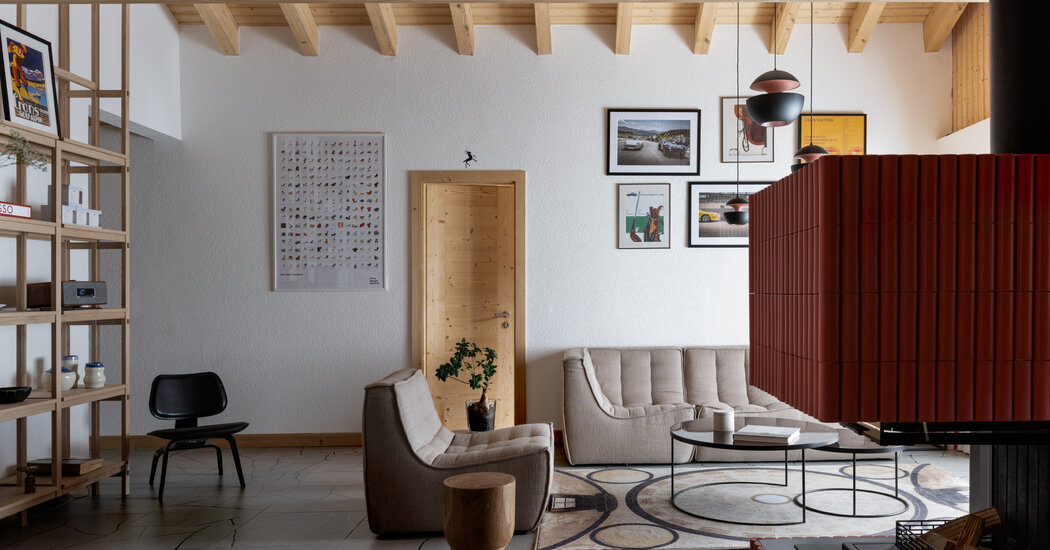
Five years after Covid-19 first upended our lives, Florent Breton’s story is something of a cliché. A French-born sales manager for Victorinox, the company best known for producing the Swiss Army knife, he was among the thousands, maybe millions, of people who turned a corner in the pandemic and adopted a new career.
Mr. Breton’s sales job required frequent travel. But once he was grounded in his home base in Lausanne, Switzerland, physical stillness produced a restlessness of the mind. He thought often of his previous work as a merchandising manager for Zenith, a luxury watch company, and his pleasure in collaborating with architects and artisans on the design of boutique and exhibition spaces.
In 2021, while continuing to work full time for Victorinox, he enrolled at a Lausanne design school called Idées House. On receiving his diploma in interior design two years later, he established a design practice and second residence 90 minutes away, in the Swiss ski resort of Crans-Montana.
From that point on, there were no more clichés. Beginning with his own home in Crans-Montana, Mr. Breton, 46, was determined to disrupt the area’s signature architectural style, the peak-roofed, timber-sided Alpine chalet.
“It’s always the same,” he said. “Old wood, gray tiles on the floor, always the same fireplace.”
For an outsider — a Frenchman raised in the Loire Valley, no less — to challenge a building typology that is effectively a Swiss national brand, was risky. But if he wanted to stand out in his new profession, he would have to be bold. He paid about $600,000 for a 1,025-square-foot 1980s condo with two bedrooms and a home office — the last domicile that would be found in a cuckoo clock or a “Heidi” reboot — and transformed it with a potent mix of Japanese and European influences. He estimated spending $150,000 in renovations.
